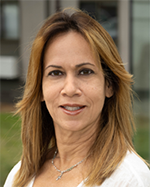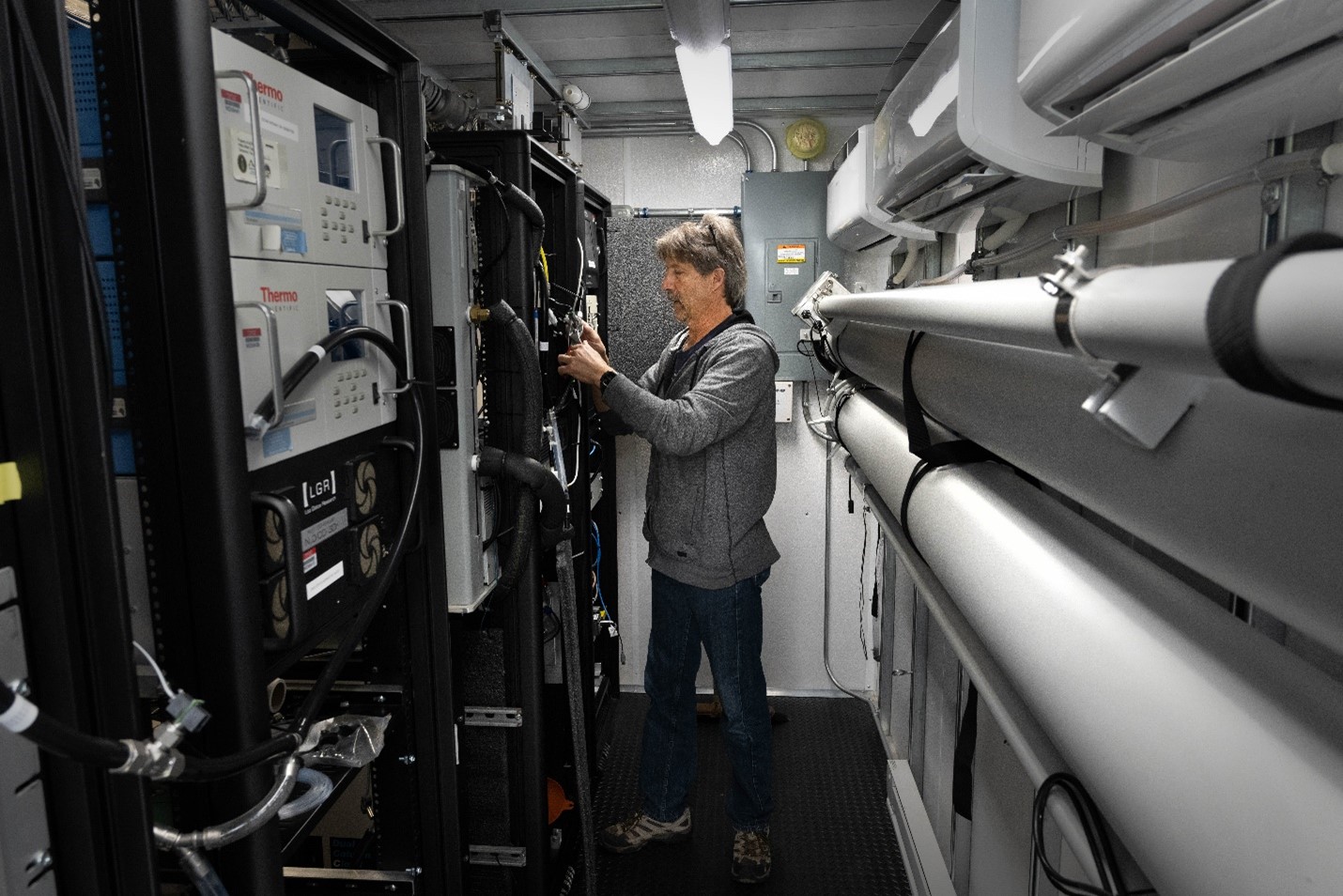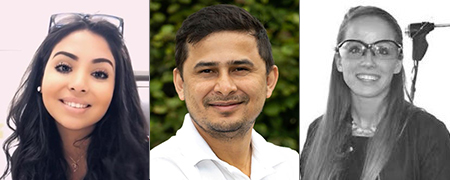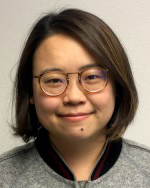ARM Staff Updates: New Aerosol Observing System Lead at Brookhaven Lab
Published: 28 March 2022
The Atmospheric Radiation Measurement (ARM) user facility has more than 460 instrument systems providing data for researchers around the world. To keep these systems running smoothly, ARM depends on instrument scientists and engineers known as instrument mentors to calibrate and assess the status of the instruments.

The team that oversees ARM’s Aerosol Observing Systems (AOS) at Brookhaven National Laboratory in New York has a new lead mentor. Atmospheric scientist Olga Mayol-Bracero now leads the AOS group within Brookhaven’s Environmental and Climate Sciences Department.
The AOS is ARM’s primary platform for collecting aerosol measurements at Earth’s surface. The AOS group at Brookhaven is responsible for the design, construction, management, and deployments of the AOS infrastructure and instrument systems.
Mayol-Bracero is also a science representative on ARM’s Aerosol Measurement Science Group. This constituent group coordinates ARM aerosol and atmospheric trace gas observations with user needs.
Previously, Mayol-Bracero was a professor at her alma mater, the University of Puerto Rico, Rio Piedras. She also served as the director of the university’s Atmospheric Chemistry and Aerosols Research Lab, Cape San Juan Atmospheric Observatory, and Pico del Este cloud forest station. The Cape San Juan observatory contributes data to major international networks overseen by NOAA, NASA, and the World Meteorological Organization’s Global Atmosphere Watch (WMO GAW) program.
Mayol-Bracero has led or co-authored 55 peer-reviewed publications. Her research focuses on the time and space variability of atmospheric aerosols, aerosol characterization, size-resolved aerosol composition and sources, carbon-containing aerosols, aerosol-cloud-precipitation interactions, and air quality.
Mayol-Bracero co-chairs the Americas Working Group of the International Global Atmospheric Chemistry project and the Caribbean Aerosol-Health Network. She is also a member of the WMO GAW Scientific Advisory Group on Aerosols, the International Commission on Atmospheric Chemistry and Global Pollution, and the External Advisory Board of the NOAA Cooperative Science Center for Atmospheric Sciences and Meteorology.
After Stephen Springston retired from Brookhaven in spring 2021, Scott Smith served as the interim lead for the ARM AOS. Smith is now the AOS associate mentor. In addition, Smith recently became an associate mentor for the cavity attenuated phase shift extinction monitor.

Welcome New Aerosol Instrument Mentors
Brookhaven’s team of AOS instrument mentors has undergone additional changes in recent months.

Mirtha Allain is a new associate mentor for the aerosol chemical speciation monitor. Allain is working on her master’s degree in chemical science and will graduate in May 2022 from Stony Brook University in New York. She has a bachelor’s degree in chemistry from Stony Brook.
Allain’s research focuses on perfluorocarbon tracers used as tools to study atmospheric transport and dispersion, building infiltration, integrity of underground systems, and other mass transfer applications. (Perfluorocarbons are compounds that contain only carbon and fluorine.) In 2019, Allain was a summer intern at Brookhaven’s Tracer Technology Center.
Ashish Singh became the associate mentor for the aerodynamic particle sizer and optical particle counter. In addition, Singh joined Cindy Salwen as an associate mentor for the condensation particle counter and scanning mobility particle sizer.
Singh’s expertise is in ambient/indoor air quality/occupational monitoring, aerosol instrumentation, laboratory and field campaign operation and management, and air quality dispersion modeling and satellite data.
Rebecca Trojanowski took over for Springston as the lead mentor for the carbon monoxide analyzer, ozone monitor, particle soot absorption photometer, and sulfur dioxide monitor. Trojanowski joined ARM in August 2021, but she has been an official Brookhaven staff member since 2012, after interning two years beforehand.
As an engineer at Brookhaven, Trojanowski is shared between the Interdisciplinary Science and Climate and Environmental Sciences departments. Her research and development efforts focus on the advancement of building energy systems, reduction of fossil fuel dependence, and technical solutions to reduce combustion-related emissions.
The rest of the AOS group at Brookhaven includes Bill Behrens, Chongai Kuang, Art Sedlacek, Gunnar Senum, Janek Uin, and Maria Zawadowicz.
Mentor Changes at Pacific Northwest National Laboratory

In December 2021, Victor Morris, a mentor for multiple ARM instruments, retired from full-time work at Pacific Northwest National Laboratory (PNNL) in Washington state.
Morris was the lead mentor for the total sky imager, infrared sky imager, infrared thermometer, and ceilometer. He is now the associate mentor for all four instruments.
Morris has been with ARM since 1996, serving as the instrument mentor for the microwave radiometers. During his first year with ARM, he participated in the first water vapor intensive operational period at the Southern Great Plains atmospheric observatory. Early in his ARM career, he also contributed to the original integration of the instruments for the North Slope of Alaska and Tropical Western Pacific sites.
Before joining ARM, Morris spent 13 years conducting wind turbulence characterization for wind energy research at PNNL.
ARM recently approved Donna Flynn to take over as the lead mentor for the total and infrared sky imagers. Josh Howie (infrared thermometer) and Damao Zhang (ceilometer) have been approved as interim lead mentors and are continuing to train with Morris. All of the new mentors are at PNNL.
Flynn began working with ARM and its micropulse lidars in 1998 as a graduate student at the University of Arizona. She continued her involvement with ARM as a staff scientist at PNNL, eventually serving as a mentor for shortwave spectral instruments and now as an assistant science translator. (ARM translators develop value-added products, or VAPs, and serve as liaisons between users and facility staff.) Flynn has been pursuing approaches to improve cloud retrievals using machine-learning techniques and has been working with PNNL colleagues Zhang and Erol Cromwell to release ARM’s first machine-learning VAP.

Howie has worked for ARM since 2016, with his main duties including work on the Data Quality Assessment for ARM Radiation Data (QCRAD) VAP, reviews of VAP data, and ingest development. Zhang has been an ARM translator since 2019, overseeing warm boundary-layer process VAPs. Zhang and Howie will retain those responsibilities, in addition to their mentor roles.
Also, Ya-Chien Feng joined PNNL in October 2021 as ARM’s new radar data mentor. Feng’s work focuses on processing and characterizing ARM radar data and future development of ARM radar measurement strategies for operations.
Before PNNL and ARM, Feng was a postdoctoral researcher for two years at the National Center for Atmospheric Research in Colorado.
Keep up with the Atmospheric Observer
Updates on ARM news, events, and opportunities delivered to your inbox
ARM User Profile
ARM welcomes users from all institutions and nations. A free ARM user account is needed to access ARM data.


















